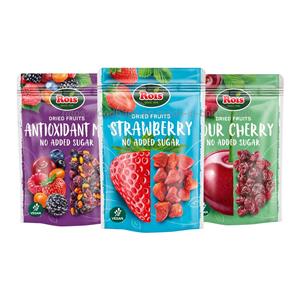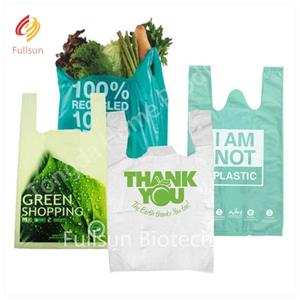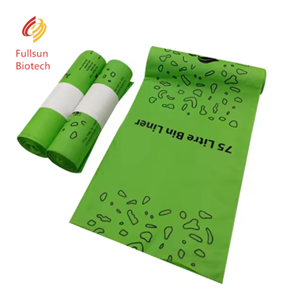What is biodegradable plastic bags's Principle and type
The degradation principle of biodegradable plastics is divided into photodegradation, biodegradation and water degradation. Especially Qingdao fullsun Biotechnology Co., Ltd. 100% biodegradable plastic bags, garbage bags, food bags, disposable tableware, straw, the company has been certified by the EU, the US FDA certification, effective solution to the white plastic pollution problem.At present, it is mainly based on microbial degradation under composting, which is mainly composed of starch. In the state of composting, it is divided into carbon dioxide by microorganisms. And water and other substances, effectively improve the soil's fertility, and solve the problem of white pollution from the source.
Biodegradable plastics are roughly divided into seven types.
First, PLA
Polylactic acid (PLA) is a new type of biodegradable material made from starch raw materials proposed by renewable plant resources such as corn. It is understood that the amount of PLA accounts for 45.1% of biodegradable plastics, which is the well-deserved main force!
Second, poly 3-hydroxyalkanoate (PHA)
PHA is a different structure of aliphatic copolyester synthesized by microorganisms fermented by various carbon sources. The most common of these are poly-3-hydroxybutyrate (PHB), polyhydroxyvalerate (PHV) and a copolymer of PHB and PHV (PHBV). The main purposes are: disposable tableware, non-woven fabrics, packaging materials, agricultural film, toys, coatings, glue, fiber and other degradable products.
Third, poly-ε-caprolactone (PCL)
Poly-ε-caprolactone (PCL) is a low-melting polymer obtained by ring-opening polymerization of ε-caprolactone, which has a melting point of only 62 °C. The degradability study of PCL has been started since 1976, and in the anaerobic and aerobic environment, PCL can be completely decomposed by microorganisms.
Fourth, polyester - PBS / PBSA
PBS with aliphatic succinic acid and butanediol as the main raw materials can meet the demand through petrochemical products, and can also be produced through bio-fermentation through natural renewable crop products such as starch, cellulose and glucose. Green circulation production from nature and return to nature. Moreover, raw materials produced by the bio-fermentation process can significantly reduce the cost of raw materials, thereby further reducing the cost of PBS.
Five, aliphatic aromatic copolyester
An aliphatic aromatic random copolyester (Ecoflex) manufactured by BASF, Germany, whose monomers are: adipic acid, terephthalic acid, and 1,4-butanediol. The current production capacity is 140,000 tons / year. At the same time, biodegradable plastic products based on polyester and starch were developed.
Sixth, polyvinyl alcohol (PVA)
Water-soluble PVA film is a new type of plastic product that has emerged internationally. It utilizes the film-forming properties of PVA, water and biological degradation characteristics, and can be completely degraded into CO2 and H2O. It is a veritable green high-tech environmental protection packaging material.
Seven, carbon dioxide copolymer
A new type of synthetic material under study, which uses carbon dioxide as a monomer raw material to be activated to a higher degree under the action of a bimetallic coordination PBM type catalyst, and copolymerizes with an epoxide to form an aliphatic polycarbonate ( PPC), after post-treatment, a carbon dioxide resin material is obtained. The products are mainly used in packaging and medical materials.




